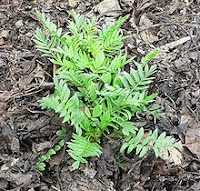Yam
Latin name: Dioscorea deltoidea
Family: Dioscoreaceae (Yam Family)
Medicinal use of Dioscorea deltoidea : The juice of the root tuber istaken in the evening in the treatment of roundworm. It is also used to alleviate constipation. The roots of most, if not all, members of this genus, contains diosgenin. This is widely used in modern medicine in order to manufacture progesterone and other steroid drugs. These are used as contraceptives and in the treatment of various disorders of the genitary organs as well as in a host of other diseases such as asthma and arthritis. The roots of this species contain an average of 4.8% diosgenin.
 |
| Buy Dioscorea |
Latin name: Dioscorea deltoidea
Family: Dioscoreaceae (Yam Family)
Medicinal use of Dioscorea deltoidea : The juice of the root tuber istaken in the evening in the treatment of roundworm. It is also used to alleviate constipation. The roots of most, if not all, members of this genus, contains diosgenin. This is widely used in modern medicine in order to manufacture progesterone and other steroid drugs. These are used as contraceptives and in the treatment of various disorders of the genitary organs as well as in a host of other diseases such as asthma and arthritis. The roots of this species contain an average of 4.8% diosgenin.
Parts available : [ Dioscorea deltoidea root ] [ Dioscorea deltoidea whole plant ]
[ Dioscorea deltoidea seed ] [ Dioscorea deltoidea Rhizome ]
More details:
The Jammu and Kashmir medicinal Plants Introduction Centre
"Ginkgo House", Nambalbal, New Coloney Azizabad, Via Wuyan-Meej Road, Pampore PPR J&K 192121
Mob:09858986794
Ph: 01933-223705
e-mail: jkmpic@gmail.com
home: http://jkmpic.blogspot.in
"Ginkgo House", Nambalbal, New Coloney Azizabad, Via Wuyan-Meej Road, Pampore PPR J&K 192121
Mob:09858986794
Ph: 01933-223705
e-mail: jkmpic@gmail.com
home: http://jkmpic.blogspot.in















